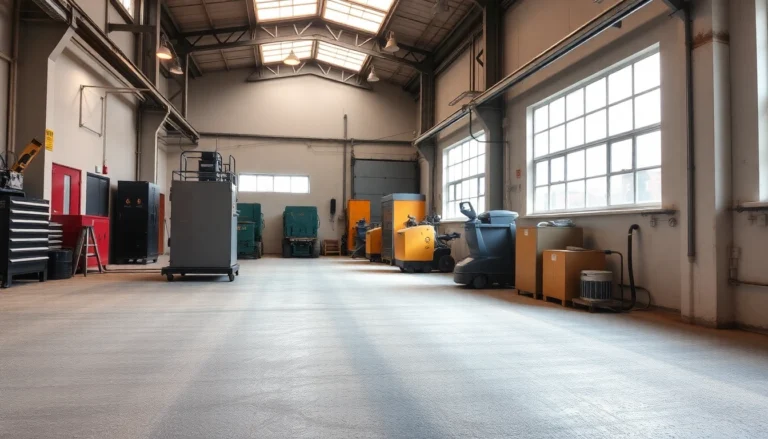Understanding the Fundamentals of Carpentry
What Is Carpentry? Definition and Scope
Carpentry is a core trades skill that involves the art and science of working with wood and other materials to construct, repair, and enhance structures. At its essence, carpentry encompasses a broad spectrum of activities, from framing new buildings to intricate finish work that adds aesthetic value. According to Carpentry – Wikipedia, it is a skilled craft where the primary tasks include cutting, shaping, and installing building materials across various construction projects such as residential homes, commercial buildings, ships, bridges, and even concrete formwork. The scope of carpentry extends beyond mere woodworking; it is deeply integrated into the entire lifecycle of construction, maintenance, and renovation, reflecting its importance in ensuring structural integrity and visual appeal.
Whether working on framing a house, designing custom cabinetry, or restoring historic structures, carpenters are vital artisans whose work directly impacts safety, durability, and aesthetic function. As a versatile profession, carpentry combines technical knowledge with creative problem-solving, demanding a wide range of skills from precision measurement to advanced woodworking techniques.
Key Skills Every Carpenter Must Develop
Mastery in carpentry hinges on a combination of technical expertise and soft skills. Essential technical skills include precise measurement, mastery of hand and power tools, and understanding of building codes and safety regulations. Additionally, skills such as reading blueprints, mathematical proficiency, and spatial awareness are fundamental for translating design plans into reality.
Equally important are soft skills like attention to detail, problem-solving, teamwork, and communication. Carpenters often work closely with architects, engineers, and clients, requiring clarity in understanding design intentions and expectations. Adaptability is crucial for dealing with unexpected challenges on-site, such as material discrepancies or structural concerns. As the industry evolves, proficiency with digital tools like CAD (computer-aided design) software has become increasingly valuable.
Developing these skills involves formal education, apprenticeships, and continuous learning through workshops and certifications. The combination of technical competence and interpersonal abilities defines a successful career in carpentry.
Common Tools and Materials Used in Carpentry
Carpentry relies on a diverse array of tools, each designed for specific tasks. Hand tools such as hammers, chisels, squares, and saws are the foundational instruments. Power tools, including drills, circular saws, jigsaws, and nail guns, significantly enhance efficiency and precision. Modern carpenters increasingly utilize digital measuring devices, laser levels, and CNC machines for high-precision work.
Materials vary depending on the project but primarily include different types of wood—such as hardwoods like oak and maple, softwoods like pine and cedar, and engineered woods like plywood and MDF. For exterior projects, weather-resistant and treated woods are common, while interior finish carpentry uses fine, smooth woods for aesthetic appeal.
Other essential materials encompass fasteners (nails, screws, bolts), adhesives, sealants, and hardware such as hinges and locks. The choice of materials influences durability, safety, and visual characteristics and should be aligned with project specifications and environmental conditions.
Essential Carpentry Techniques for Beginners and Pros
Measuring, Cutting, and Joining: Core Skills
Accurate measurement is the cornerstone of quality carpentry. Mastery in using measuring tapes, squares, and levels ensures that cuts are precise, fitting components seamlessly. Cutting techniques involve both hand saws and power saws, with each suited for specific types of cuts—ripping, cross-cutting, bevels, or detailed work.
Joining techniques such as butt joints, lap joints, dovetails, and rabbet joints form the structural backbone of carpentry. The choice of joint depends on the load requirements, aesthetic considerations, and the materials used. Skilled carpenters also utilize various fastening methods, including nails, screws, dowels, and adhesives.
Combining these core skills ensures the structural and aesthetic success of every project. For example, precision in measuring and cutting profoundly impacts the ease of assembly and overall finish quality.
Framing, Finishing, and Structural Work
Framing is perhaps the most recognizable aspect of carpentry, involving the construction of the skeleton of buildings—including walls, floors, and roof structures. Framing carpenters work with large timber or steel studs, ensuring alignment with blueprints and safety standards. Proper framing guarantees stability, insulation efficiency, and load distribution.
Finishing carpentry focuses on the aesthetic and functional details that complement the structural components. This includes installing doors, windows, cabinets, moldings, staircases, and decorative woodwork. Attention to detail during finishing work elevates the perceived quality of craftsmanship.
Structural work also involves retrofitting and reinforcement, especially in renovation projects, where existing structures require strengthening or modification.
Advanced Techniques: Custom Woodwork and Restoration
Advanced carpentry techniques involve creating custom wood features, such as intricate cabinetry, detailed moldings, and custom furniture. These skills demand a deep understanding of wood properties, intricate joinery, and finishing methods to achieve high-end results.
Restoration carpentry focuses on restoring antique structures, requiring skills in matching old materials, deciphering historical construction methods, and delicately repairing or replicating damaged elements without compromising authenticity.
Mastery in these areas not only enhances a carpenter’s versatility but also opens opportunities for high-value projects and specialization.
Designing and Planning Carpentry Projects
Reading and Interpreting Blueprints
The ability to accurately read blueprints and technical drawings is fundamental for translating design visions into physical structures. Blueprints contain detailed specifications, dimensions, material lists, and instructions that guide installation and craftsmanship.
Proficiency in understanding symbols, scales, and notation allows carpenters to identify project scope and sequencing, reducing errors and material wastage. Modern projects may also incorporate digital plans, requiring skill in CAD software.
Material Selection for Durability and Aesthetics
Selecting the appropriate materials involves evaluating durability, environmental exposure, aesthetic preferences, and cost. For structural components, strength and moisture resistance are priorities, whereas interior finishes may focus on appearance and grain quality.
Understanding the properties and treatment options of various wood types and composites helps carpenters make informed decisions that meet project specifications and lifespan expectations.
Estimating Costs and Project Timelines
Accurate estimation is essential for project planning, budgeting, and client satisfaction. It requires detailed takeoffs from blueprints, considering material quantities, labor hours, and equipment costs. Modern estimating software can streamline this process, but experienced carpenters develop keen judgment over time.
Effective planning includes contingency allowances for unforeseen challenges, setting realistic schedules, and coordinating with other trades to ensure smooth workflow.
Building Your Career in Carpentry
Training, Certification, and Education Pathways
Entering and advancing in the carpentry profession traditionally involves a combination of apprenticeships, technical colleges, and on-the-job training. Many programs partner with unions and industry associations, providing structured pathways to acquiring skills and certifications.
Certifications, such as OSHA safety standards or specialized trades licenses, enhance credibility and employability. Institutions like Los Angeles Trade-Tech College offer comprehensive programs that prepare students for careers in construction and maintenance through both theoretical learning and practical experience.
Continuous education, workshops, and online courses keep carpenters updated on evolving techniques and standards.
Tips for Success in the Carpentry Trade
Excellence in carpentry demands dedication, attention to detail, and a strong work ethic. Developing a reputation for reliability and high-quality craftsmanship can lead to repeat business and referrals. Building a diverse skill set, including specialization in areas like high-end finish work or restoration, can set you apart.
Networking within the industry, maintaining a professional portfolio, and investing in quality tools are practical steps toward career growth. Embracing new technologies and sustainability practices can also open doors in a competitive landscape.
Emerging Trends and Opportunities in Carpentry
The carpentry field is continuously evolving with innovations like green building materials, prefabrication, and digital design technologies. The rise of sustainable construction practices emphasizes energy efficiency, recyclable materials, and eco-friendly processes, creating new niches for skilled carpenters.
Additionally, the growing demand for custom homes, historic restoration, and luxury interiors offers high-value opportunities for specialized carpentry services. Careers can extend into project management, consulting, or entrepreneurship, utilizing advanced skills and industry knowledge.
Maintaining Quality and Safety Standards
Best Practices for Quality Craftsmanship
Quality in carpentry is achieved through meticulous work, adherence to standards, and continuous skill improvement. Regular calibration of tools, careful planning, and detailed inspection routines help ensure craftsmanship meets or exceeds industry benchmarks.
Incorporating latest techniques, innovative materials, and sustainable practices also enhances project quality. Client feedback and review processes contribute to ongoing improvement.
Workplace Safety Protocols and Regulations
Safety is paramount in carpentry due to the inherent risks associated with tools, heights, and materials. Compliance with OSHA standards, proper use of personal protective equipment, and rigorous safety training are mandatory.
Implementing safety protocols like hazard assessments, machine guards, and emergency procedures reduces accidents. Regular safety audits and fostering a safety-conscious culture are best practices for workplaces.
Client Communication and Project Management
Clear communication with clients, suppliers, and team members ensures project expectations are aligned. Accurate estimates, progress updates, and responsiveness foster trust and satisfaction.
Utilizing project management tools and detailed documentation streamlines workflow, reduces errors, and facilitates timely completion. Addressing issues proactively maintains high standards of professionalism.








